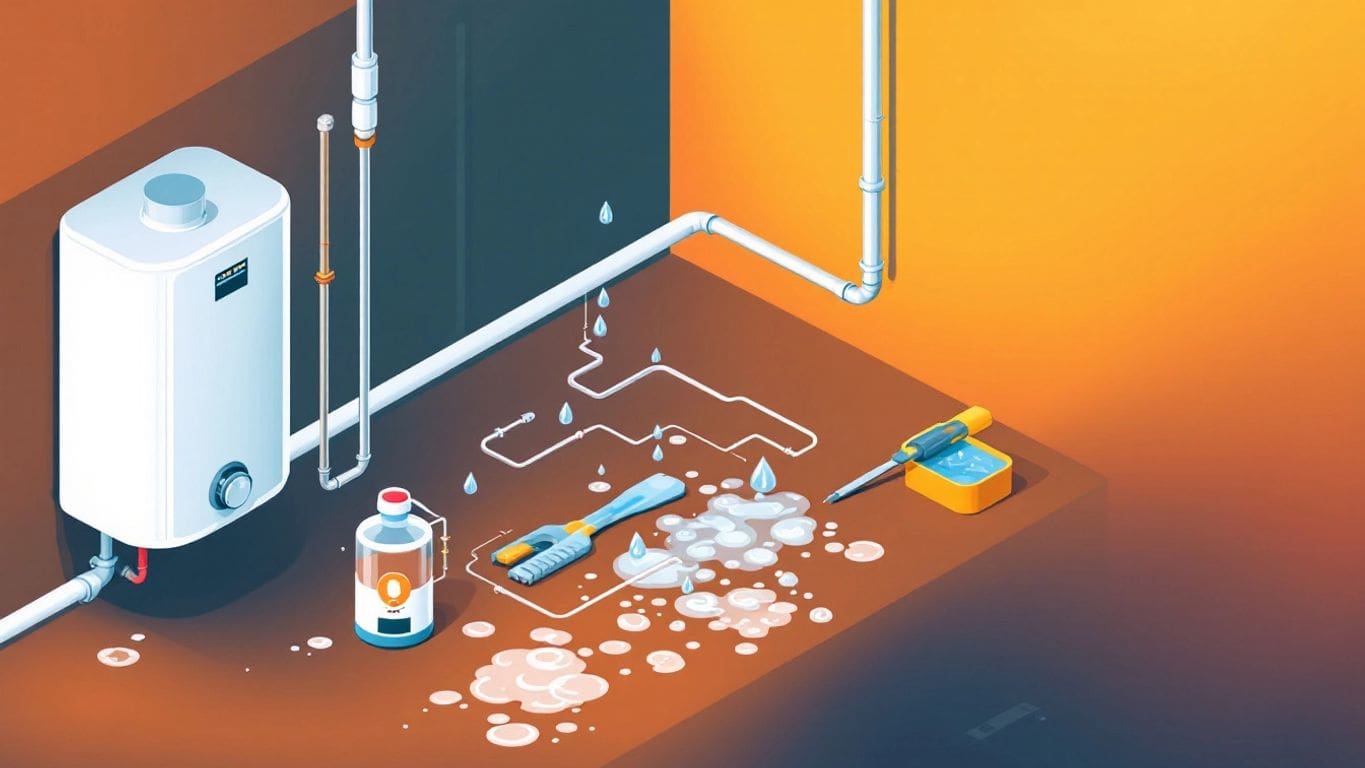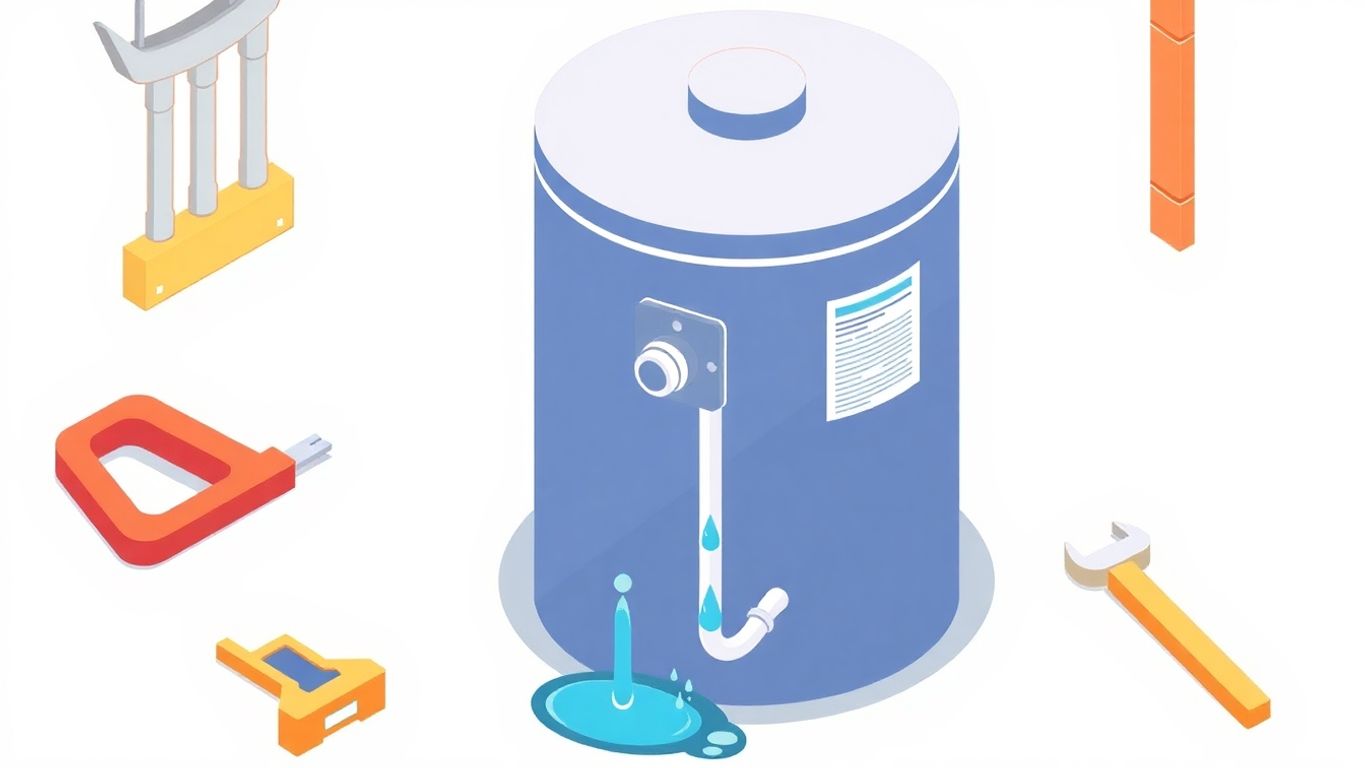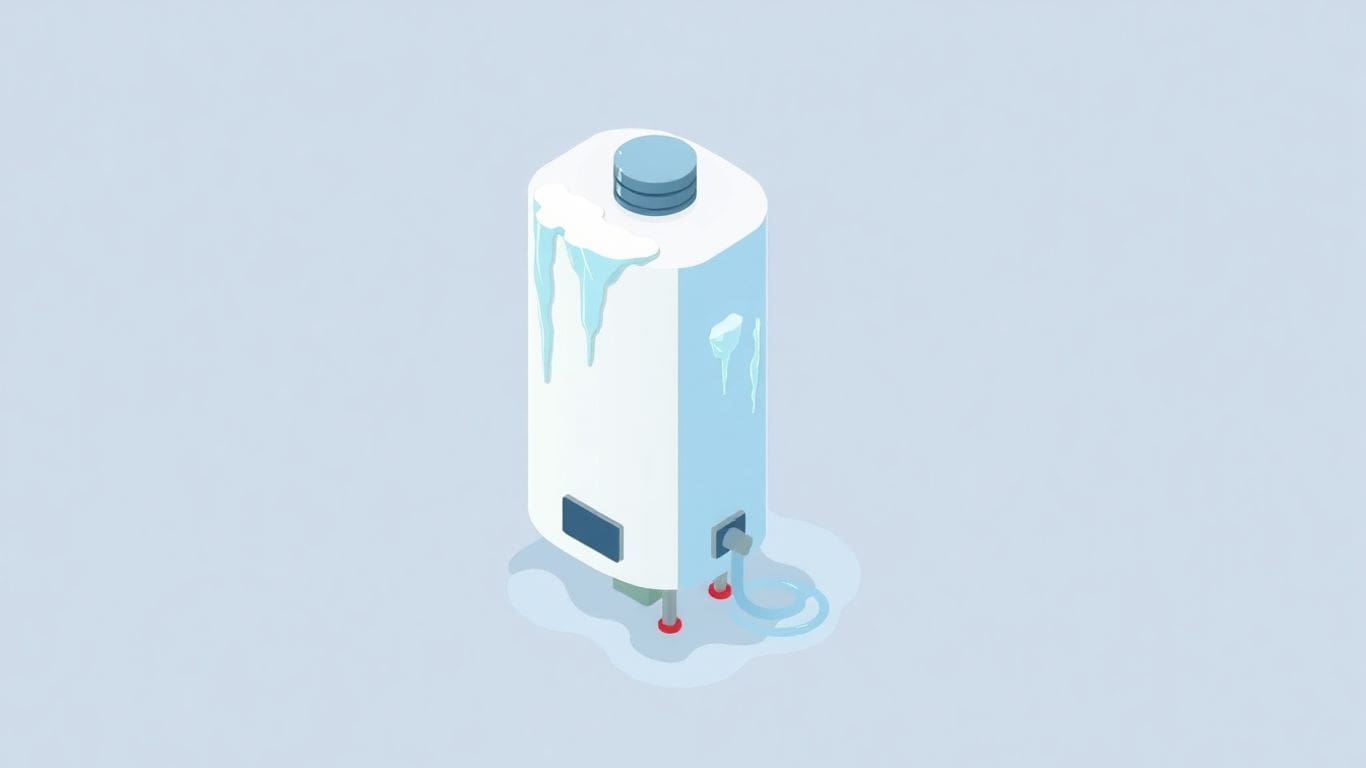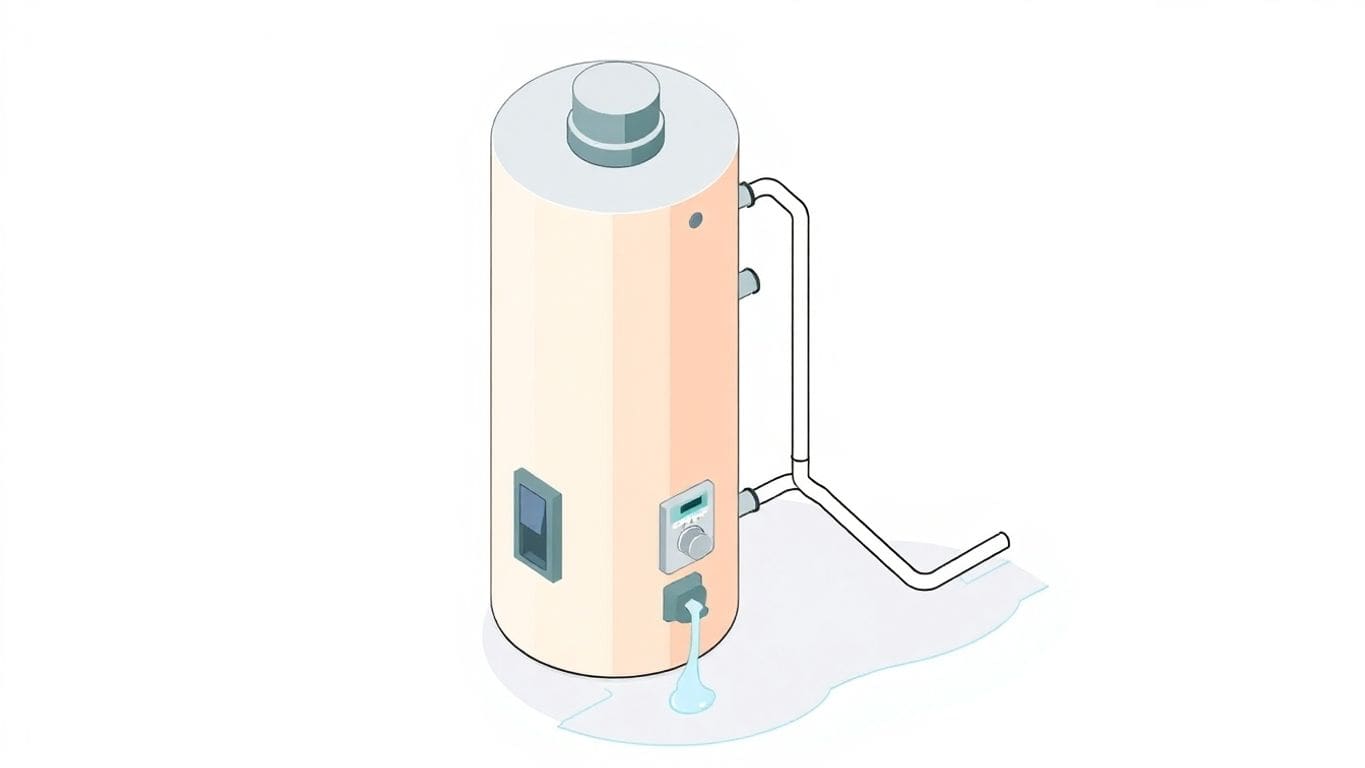
Ever noticed a puddle forming under your water heater? It’s not just a random spill. If your water heater is leaking from the drain pipe, it might be a sign of something more serious. But don’t worry, figuring out why it’s happening and how to fix it doesn’t have to be a huge headache. In this article, we’re breaking down the common reasons for these leaks and what you can do about them. Whether you’re a DIY enthusiast or someone who prefers calling in the pros, we’ve got you covered. Let’s dive into the basics of dealing with a leaky water heater drain pipe.
Water heaters can start leaking from the drain pipe for a few reasons. One common cause is a faulty drain valve. Over time, these valves can wear out or become loose. Another reason might be sediment build-up inside the tank. This can lead to pressure issues, forcing water out through the drain pipe. Lastly, corrosion can eat away at the pipe or valve, causing leaks.
You might notice a few signs if your drain pipe is leaking. Look for water pooling around the base of your water heater. This is a clear indicator. You may also hear a hissing sound, which suggests water is escaping. Sometimes, you might see rust or mineral deposits on the pipe or floor.
Ignoring a leaking drain pipe can lead to bigger problems. Water damage is a major risk, which can harm floors and walls. Mold growth is another concern, especially in damp areas. Plus, a leaking water heater can waste a lot of water, increasing your bills.
It’s important to address leaks quickly to avoid costly repairs and water damage. Fixing a small leak now can save you a lot of trouble later.
First, take a close look at the drain valve. This is a small part at the bottom of your water heater. Sometimes, it gets loose or wears out. Check if it’s dripping water. If it is, try tightening it with your hand. Be careful not to over-tighten it. If it’s still leaking, you might need to replace it.
Next, check for rust or any damage. Rust can make holes in the tank or pipes. Look for any rusty spots or water stains. These are signs that your water heater might be corroded. If you see any, it’s important to fix them soon. Corrosion can cause big problems if ignored.
You can also use tools to find leaks. One simple tool is a moisture meter. It tells you if there is water where it shouldn’t be. You can also use a flashlight to see better in dark areas. If you find a leak, mark it with tape so you can find it easily later.
Finding the source of a leak early can save you a lot of trouble and money. Take time to inspect your water heater regularly.
Turning off the water supply is the first step before you start any repairs. Locate the cold water valve on your water heater. It’s usually on top of the unit. Turn it clockwise until it stops. This will stop the water flow into the tank. If your valve is hard to turn, don’t force it. You might need a wrench for help.
Before you do anything else, make sure the power is off. For electric heaters, find the circuit breaker in your home’s electrical panel. Flip the switch labeled "water heater" to the "off" position. For gas heaters, turn the gas valve to "pilot" or "off." This prevents any electricity or gas from reaching the unit, making it safe to work on.
Safety comes first. Make sure the area around your water heater is clear. Keep kids and pets away while you work. Wear gloves to protect your hands from hot surfaces. If you’re unsure about any step, consider consulting a professional to avoid any accidents.
Taking the time to turn off your water heater properly can save you a lot of trouble. It’s a simple step but crucial for your safety and the longevity of your appliance.
One of the most common reasons your water heater might leak is a faulty drain valve. This valve is supposed to keep water inside the tank. If it’s broken or not closed tightly, water might start dripping out. Imagine trying to fill a bucket with a hole in it—it just doesn’t work well. So, if you notice water pooling around your heater, check the drain valve first.
Over time, tiny bits of dirt and minerals can settle at the bottom of your water heater tank. This is called sediment. If too much sediment builds up, it can cause the tank to overheat and damage the drain pipe, leading to leaks. You might hear rumbling noises when your heater is on—this is a sign of sediment build-up.
Corrosion is another big issue. Water heaters are made of metal, and metal can rust. When parts of your heater rust, they can weaken and start to leak. This is especially true for older heaters that have been in use for many years. Keeping an eye on any rust spots can help you catch leaks early.
It’s important to remember that small leaks can become big problems if left alone. Regular checks and maintenance can save you from a lot of trouble later on.

Sometimes, the simplest fix is the best. If your water heater is leaking from the drain pipe, it might just be a loose connection. Grab a wrench and give it a gentle twist to see if that stops the leak. Be careful not to overtighten, as this could cause more damage. If you’re unsure, tighten it just enough to feel resistance.
A faulty drain valve is a common issue and can be replaced easily. First, turn off the water supply and power to the heater. Then, drain the tank completely. Unscrew the old drain valve with a wrench and replace it with a new one. Make sure the new valve is snug and secure.
If you notice frequent leaks or have an older heater, it might be time to consider upgrading to a newer model for better efficiency and reliability.
Sediment build-up can cause leaks by clogging the drain valve. To flush it out, turn off the water and power supply. Attach a garden hose to the drain valve and run the other end to a safe drainage area. Open the valve and let the water flow out until it runs clear. This process helps remove the sediment and can prevent future leaks.
Regular maintenance, like flushing the tank, can help keep your water heater running smoothly and extend its life. Remember, if these DIY fixes don’t solve the problem, it might be time to call a professional.
Sometimes, fixing a water heater leak isn’t a simple task. If you notice water pooling around your heater or hear strange noises, it might be time to get some help. Here are a few signs you should call a pro:
Finding the right person to fix your water heater is important. Look for a technician who is licensed and has good reviews. You can ask friends or family for recommendations, or check online. Make sure they have experience with your type of heater.
Repair costs can vary depending on the problem. It’s a good idea to get a few quotes before deciding. Sometimes, fixing a leak can be cheaper than replacing the whole heater. But if your heater is old, you might want to think about getting a new one.
If you’re unsure about the extent of the problem, it’s best to consult a professional. They can assess the situation and suggest the best course of action. Remember, dealing with water and electricity can be dangerous, so safety should always come first.
Keep an eye on your water heater by checking it regularly. Look for any signs of rust, leaks, or strange noises. These could mean your heater is getting old and might need replacing. Catching problems early can save you a lot of trouble later on. Make a habit of inspecting your heater every few months.
Over time, sediment can build up in your water heater tank. This can make your heater less efficient and cause it to wear out faster. To prevent this, flush out the tank once or twice a year. It’s a simple process: turn off the heater, attach a hose to the drain valve, and let the water run until it’s clear. This helps keep your heater running smoothly.
The anode rod is a metal rod inside your heater that helps prevent rust. It attracts minerals that would otherwise cause the tank to corrode. Check the rod every year and replace it if it’s worn down. A good anode rod can extend the life of your heater.
Remember, a little maintenance goes a long way. By taking care of your water heater, you can avoid unexpected repairs and keep it working efficiently for years.
If your water heater is over 15 years old, it might be time to consider a replacement. Aging water heaters can show signs like rust, strange noises, and leaks, indicating the need for replacement. Planning ahead can help you manage costs and ensure you always have reliable hot water.
The drain pipe in your water heater has a simple but important job. It helps remove water from the tank when you need to empty it. This might be for cleaning or fixing the heater. Without the drain pipe, getting rid of old water would be a big hassle.
Taking care of the drain pipe is key to keeping your water heater running smoothly. If the pipe gets blocked or damaged, it can cause leaks or other problems. Here are some things you can do:
Drain pipes can fail for a few reasons. Sometimes, they get rusty or corroded over time. Other times, they might crack from too much pressure. Here’s what to watch out for:
Remember, keeping an eye on your drain pipe can save you from bigger headaches down the road. A little check-up now and then can keep your water heater working well for years.
Thinking about switching from a traditional water heater? Tankless water heaters might be the way to go. Unlike the big, bulky tanks you’re used to, these heaters warm water only when you need it. This means you won’t run out of hot water during a long shower or while doing dishes. Plus, they’re usually more energy-efficient, which can save you money on your utility bills.
When it comes to energy use, tankless heaters often come out on top. They don’t store hot water that might cool down over time, wasting energy. Instead, they heat water as it flows through the system. Look for models with a high energy factor (EF) rating. This rating tells you how efficiently the heater converts energy into hot water. The higher the number, the better.
Switching to a tankless water heater can mean spending less over time, even if the initial cost is higher. Traditional water heaters might be cheaper upfront, but they often use more energy and don’t last as long. With a tankless model, you might pay more at first but save money on energy bills and replacement costs later. Consider the total cost of ownership, not just the purchase price.
Upgrading to a new, energy-efficient model can save money in the long run. It’s advisable to hire professionals for installation and repairs, especially for older units. Consider local rebates and budget for installation costs. Proactive replacement can prevent costly water damage and ensure reliable hot water supply.
If you’re thinking about making the switch, check out water heaters vary in type and efficiency for more insights on different models and their benefits.

To keep your water heater running smoothly, regular maintenance is key. Start with checking the temperature settings. Keep it around 120 degrees Fahrenheit. This not only saves energy but also prevents overheating.
Every few months, inspect the tank for any signs of rust or leaks. If you spot any issues, address them immediately. Regular maintenance can significantly increase your heater’s lifespan.
Sometimes, parts of your water heater wear out faster than others. Replacing these parts can make a big difference. Consider upgrading the anode rod. This part helps prevent rust inside the tank.
If your heater is over 20 years old, consider upgrading to a newer model. Newer models are more energy-efficient and can save you money in the long run.
Keep an eye out for signs that your water heater might be in trouble. Listen for strange noises like popping or banging. These sounds can mean sediment build-up inside the tank.
Watch for leaks around the base of the heater. Leaks can lead to bigger problems if not fixed quickly. Also, monitor your energy bills. A sudden increase might signal that your heater is working too hard.
Regular checks and timely repairs not only extend the life of your water heater but also ensure you have a reliable supply of hot water. Don’t wait for a major breakdown to take action. Stay ahead by keeping an eye on your heater’s health.
Your water heater might be leaking from the drain pipe due to a faulty valve, sediment build-up, or corrosion.
Look for water puddles near the heater, dampness around the base, or a drop in water pressure.
First, turn off the water supply and power to the heater to prevent further damage or safety hazards.
Yes, you can try tightening connections or replacing a faulty valve, but call a professional if you’re unsure.
If the leak persists after basic fixes or if you’re uncomfortable doing repairs, it’s best to call an expert.
Ignoring a leak can lead to water damage, increased utility bills, or even heater failure.
Regular maintenance, like flushing the tank and checking the anode rod, should be done annually.
Yes, tankless water heaters offer energy efficiency and can save money in the long run.



